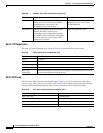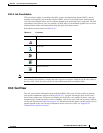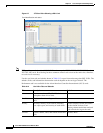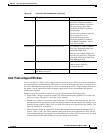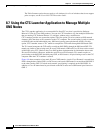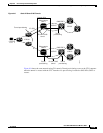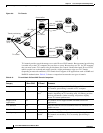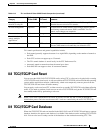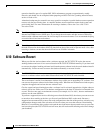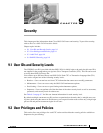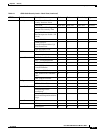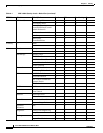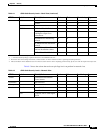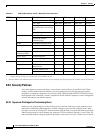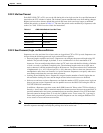
8-22
Cisco ONS 15454 Reference Manual, R8.5.x
78-18106-01
Chapter 8 Cisco Transport Controller Operation
8.10 Software Revert
operation should be part of a regular ONS 15454 maintenance program at approximately weekly
intervals, and should also be completed when preparing an ONS 15454 for a pending natural disaster,
such as a flood or fire.
A database backup may be restored in two ways, partial or complete. A partial database restore operation
restores only the provisioning data. A complete database restore operation restores both system and
provisioning data. For more information on restoring a database, refer to the Cisco ONS 15454
Procedure Guide.
Note The following parameters are not backed up and restored: node name, IP address, mask and gateway, and
Internet Inter-ORB Protocol (IIOP) port. If you change the node name and then restore a backed up
database with a different node name, the circuits map to the new node name. Cisco recommends keeping
a record of the old and new node names.
Note To avoid a node IP and secure IP ending up in the same domain after restoring a database, ensure that
the node IP stored in the database differs in domain from that of the node in repeater mode. Also, after
restoring a database, ensure that the node IP and secure IP differ in domain.
8.10 Software Revert
When you click the Activate button after a software upgrade, the TCC2/TCC2P copies the current
working database and saves it in a reserved location in the TCC2/TCC2P flash memory. If you later need
to revert to the original working software load from the protect software load, the saved database installs
automatically. You do not need to restore the database manually or recreate circuits.
Note The TCC2/TCC2P card does not carry any software earlier than Software R4.0. You will not be able to
revert to a software release earlier than Software R4.0 with TCC2/TCC2P cards installed.
The revert feature is useful if a maintenance window closes while you are upgrading CTC software. You
can revert to the protect software load without losing traffic. When the next maintenance window opens,
complete the upgrade and activate the new software load.
Circuits created and provisioning done after a software load is activated (upgraded to a higher software
release) will be lost with a revert. The database configuration at the time of activation is reinstated after
a revert. This does not apply to maintenance reverts (for example, 4.6.2 to 4.6.1), because maintenance
releases use the same database.
To perform a supported (non-service-affecting) revert from Software R8.5, the release you want to revert
to must have been working at the time you first activated Software R8.5 on that node. Because a
supported revert automatically restores the node configuration at the time of the previous activation, any
configuration changes made after activation will be lost when you revert the software. Downloading
Release 8.5 a second time after you have activated the new load ensures that no actual revert to a previous
load can take place (the TCC2/TCC2P card will reset, but will not be traffic affecting and will not change
your database).



